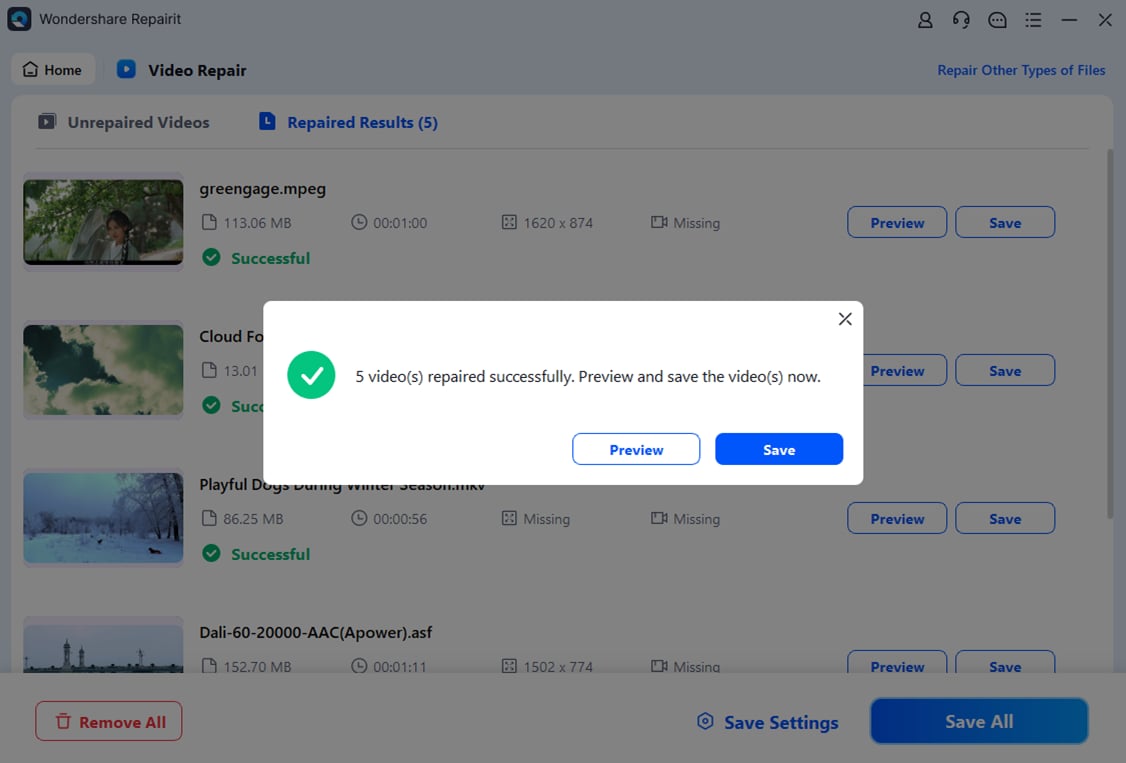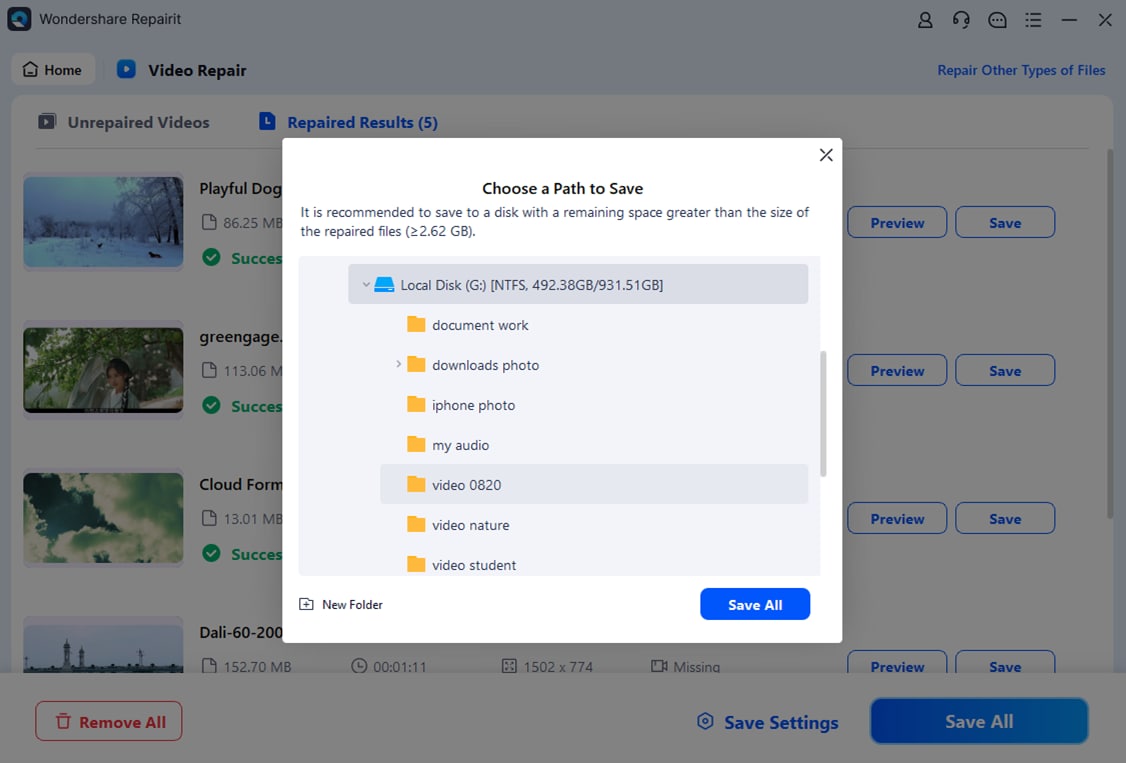You came across an AV1 codec video file and are unsure if the VLC player supports the format on your system. With the rise of streaming platforms and high-definition video content, efficient video file codecs have become a need of the hour. Thus, AV1 emerged as a powerful video codec that gained traction due to its better compression and video quality compared to previous older codecs like H.264.
While the VLC media player is known to support a wide range of file formats and codecs, playing AV1 files can be a little tricky. Follow this article to learn about AV1 codec and step by step guide on how to play it on a VLC media player.
In this article
Part 1: What is the AV1 codec, and How Does it Work?
AV1 is an open-source video codec created by the Alliance for Open Media (AOMedia). It was launched in 2018 and designed to replace VP9 and compete with HEVC. However, its main benefit is royalty-free, so companies can use it for free and save immensely over the competition VP9 and H264.
It uses advanced file compression technology to achieve smaller file sizes while maintaining high video quality. In addition, the codec is the preferred choice for streaming and online video content, as it requires less bandwidth to upload and download. AV1 can provide 30% bandwidth savings compared to its predecessors, like VP9 and HEVC.
However, here are the following main techniques of how AV1 works:
- AV1 codec divides the large video frame into smaller blocks for efficient encoding.
- AV1 predicts the current frame by analyzing several previous frames. This prediction minimizes the data needed to store the actual frame since it only captures the difference between the predicted and actual frame.
- AV1 also incorporates loop filtering to improve visual quality. Internal processing at 10 or 12 bits per sample minimizes rounding errors, resulting in sharper images.
- AV1 can integrate HDR metadata directly into the video stream, improving image quality for HDR content.
- AV1 supports adaptive bitrate streaming, allowing video quality to adjust according to available bandwidth and playback conditions.
- AV1 supports various resolutions and frame rates, making it scalable for different devices and use cases.
Part 2: How to Play AV1 File on VLC Player?
As VideoLAN is a member of AOMedia, the maker of the AV1 format, it published the 3.0.0 version of VLC in 2018 and included initial support for the AV1 codec for VLC. It also added decoder support for AV1 video.
VLC is a good choice when you are looking for an AV1 player because it keeps updating to better support AV1. However, depending on your system, it might require some additional configuration for the VLC AV1 codec run.
Here are the following steps to play AV1 codec on VLC:
Step 1: Since the newest version of the VLC media player offers better codec support. Ensure to update your VLC player to the latest available version for your system. If you do not have the player installed already, download, and install the VLC player from the official website.

Step 2: Launch the media player on your system and click on the “Media” option at the top left corner. Select the “Open File...” option from the dropdown menu. You can also choose Open Multiple Files and Open Folder to play a. av1 video playlist.

Step 3: Navigate to the location of your AV1 file saved, select the file, and click “Open”.

Step 4: The VLC player should now start playing your AV1 file without any issues.
Part 3: How to Fix AV1 Video File Not Working Issue?
For the most part, AV1 video files open and work flawlessly without issues on the VLC media player. But if you are facing issues with AV1 video file on a supported media player, here are some quick fixes you can try:
Method 1: Update VLC Player

Sometimes, older versions of VLC players might not support the latest AV1 codec due to the unavailability of the codec support. Ensure you have the latest version of VLC downloaded from the official website. Newer versions often include better codec support and can help fix the AV1 VLC issues.
Method 2: Check Hardware Acceleration
Some AV1 video files leverage hardware acceleration for playback. You can enable hardware acceleration on VLC by the below steps:

In VLC Player, go to Tools > Preferences > Input/Codecs and make sure AV1 is enabled under Hardware-accelerated decoding.
Method 3: Repair Corrupted AV1 File
If you are unable to play your AV1 video file even with the supported video player, then it might be corrupted. In that case, you should use the Wondershare Repairit to fix it. With this Video Repair software, you can effortlessly repair and improve the video quality of your AV1 video file. In addition, you can also repair up to 18 damaged video file formats, in three simple steps and restore your precious video files.
Here is how you can repair your corrupted Av1 file using Repairit:
Step 1: Launch the application and click the "+Add" button at the center. Or simply drag and drop the corrupted AV1 video file into the middle area of the application.

Step 2: After adding the corrupted videos, the interface shows the complete details of each corrupted video. Click the "Repair" button at the bottom to initiate the repair process.

Step 3: Once the repair action is completed, a pop-up window appears to save and preview the repaired videos. Click the "OK" to save the repaired videos.

Step 4: Click the "Save" button and choose a path to save.

Repair Corrupted AV1 File with Repairit Video Fixer Now

Part 4: What Player Supports AV1?
While VLC supports AV1 codec files to open and play, there are other media players with native AV1 support. If ‘VLC AV1’ is not working together, look at these alternatives:
- Modern Web Browsers: Most popular web browsers such as Chrome, Mozilla Firefox, Microsoft Edge, and Opera browsers all support streaming and playing of AV1 codec video files.
- Video Streaming Platforms: Video content providers such as Amazon, Facebook, Netflix, and YouTube offer AV1 codec support through their devices and online platforms.
- Multimedia Players: Media players such as Vivaldi, PotPlayer, MPC-BE, and 5K Player all fully support AV1 video codec files, along with the most popular video formats.
- Smart Multimedia Devices: Smart devices such as Kodi, Android phones, iPhones, Android TVs, and Amazon Firesticks come with built-in support for AV1. This means that users can stream and play AV1-encoded videos natively without the need for additional software or hardware.
Conclusion
While AV1 is a popular and robust video codec with many advantages, many media players do not support its playback. With recent updates, the VLC player completely supports AV1 files. But it might require some configuration depending on the system. With the help of the steps outlined above, you can set up your VLC media player with the required adjustments and smoothly play AV1 files. You can also use native AV1 support media players to playback the files.
FAQ
-
1. How to play AV1 codec?
If you are trying to play an AV1 codec video file, then you can follow one of the methods below:1. You can use a media player that supports AV1 codec, such as VLC Media Player or 5K Player.
2. Or, you can use conversion software to convert the AV1 file into a commonly supported file format.
-
2. What does AV1 stand for?
AV1 stands for AOMedia Video 1. It is an open-source, royalty-free video codec developed by the Alliance for Open Media. -
3. Is AV1 better than HEVC?
AV1 offers comparable or even better image quality at smaller file sizes compared to HEVC (H.265). Additionally, AV1 is royalty-free, making it a more open and accessible choice.


 ChatGPT
ChatGPT
 Perplexity
Perplexity
 Google AI Mode
Google AI Mode
 Grok
Grok

